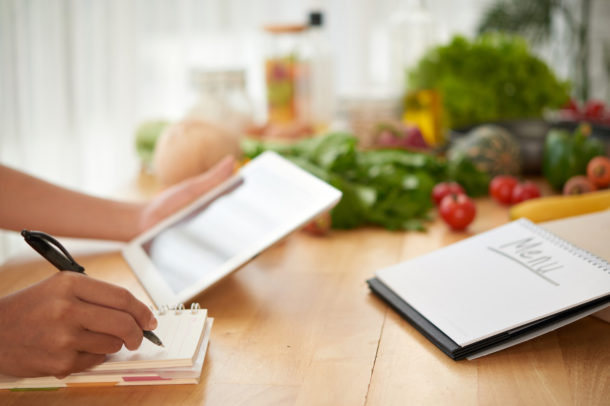Submitted by June Martin, RD, CDE Grand River Hospital
Planning your meals is a fantastic way to save time and money and reduce the number of last-minute trips to the grocery store. It will also help you avoid falling into the trap of buying convenience and fast foods. Using the Kidney Community Kitchen’s meal planning tool can ensure you are meeting your nutritional needs and give you a great visual overview of your prepared menu(s).
Not sure what numbers you’re aiming for? Ask your dietitian for help. There are a few important things to keep in mind to make meal planning work for you!
- Take stock! What’s in your pantry, fridge or freezer that’s not going to last? Maybe you have a head of cauliflower that you never got around to using or some eggs that are going to expire. Plan meals early in the week with these ingredients to avoid wasting food. But keep in mind – when in doubt, throw it out!
- Start with protein. Often planning a meal around your protein is the easiest way to go. If chicken is on sale you might want to plan a couple of meals with it. The Kidney Community Kitchen’s cookbook can be a great resource for recipes using specific ingredients. Talk to your dietitian to find out how much protein you should aim for each day.
- Cook once, eat twice! If you enjoy leftovers, plan meals that can serve as lunch for the rest of the week or supper for a couple days. If you do not like leftovers, look for recipes that can be easily repurposed. The Persian Chicken on the Kidney Community Kitchen’s website is not only great fresh off the grill, but also delicious thinly sliced in sandwiches the next day.
- Look at your schedule. Plan easy meals or leftovers for days where you have medical appointments or dialysis.
- Read the recipes carefully – is it going to make the right amount for you? Will you have leftovers of a specific ingredient? If you’re buying tortillas for the Tortilla Pizzas with Roasted Red Peppers and Shrimp, then maybe plan for Breakfast Burritos later in the week.
- Plan for snacks. Consider setting aside an hour on the weekend to do some prep work. Prepare a batch of hard-boiled eggs for high protein snacks or a quick breakfast. These can be used as the basis for egg salad or to top a salad. Make a batch of healthy, kidney-friendly muffins or squares.
- Be flexible. Sometimes our best intentions get sidetracked so you may need to mix and match your meals for the week.
- Make a list! Take time to jot down all the ingredients you don’t have on hand. Pay attention to how much you’ll need for any new recipes. Keep a running list of any pantry staples as your stock gets low. Aim to stick to your list at the grocery store.
- Try something new like a different recipe each week. It’s easy to get bored with the same things over and over. Meal planning is a great way to stay creative!!
- Schedule your time wisely and make meal planning part of your routine! Whether it’s Saturday morning over coffee or Tuesday evening on dialysis – find a time that works for you.
How to Use the Meal Planner:
- Create a membership account. While you don’t need an account to use the meal planner, you will not be able to print or save your plans without one. To request an account, click here.
- Browse the recipes. With an account, you can choose your favourites by clicking on the heart icon. These recipes will be linked to your meal planner account.
- Sort the recipes. You can display recipes by Diet Type and Meal Type, or simply scroll through the virtual cookbook.
- Take notes. Review the nutrient analysis and serving size to ensure they meet your dietary needs.
- Start planning. Refer to the Meal Planner User Instructions for more details and watch the video, How to Use the Kidney Community Kitchen Meal Planner. See this, and other videos on the Video page of the Resource section.

